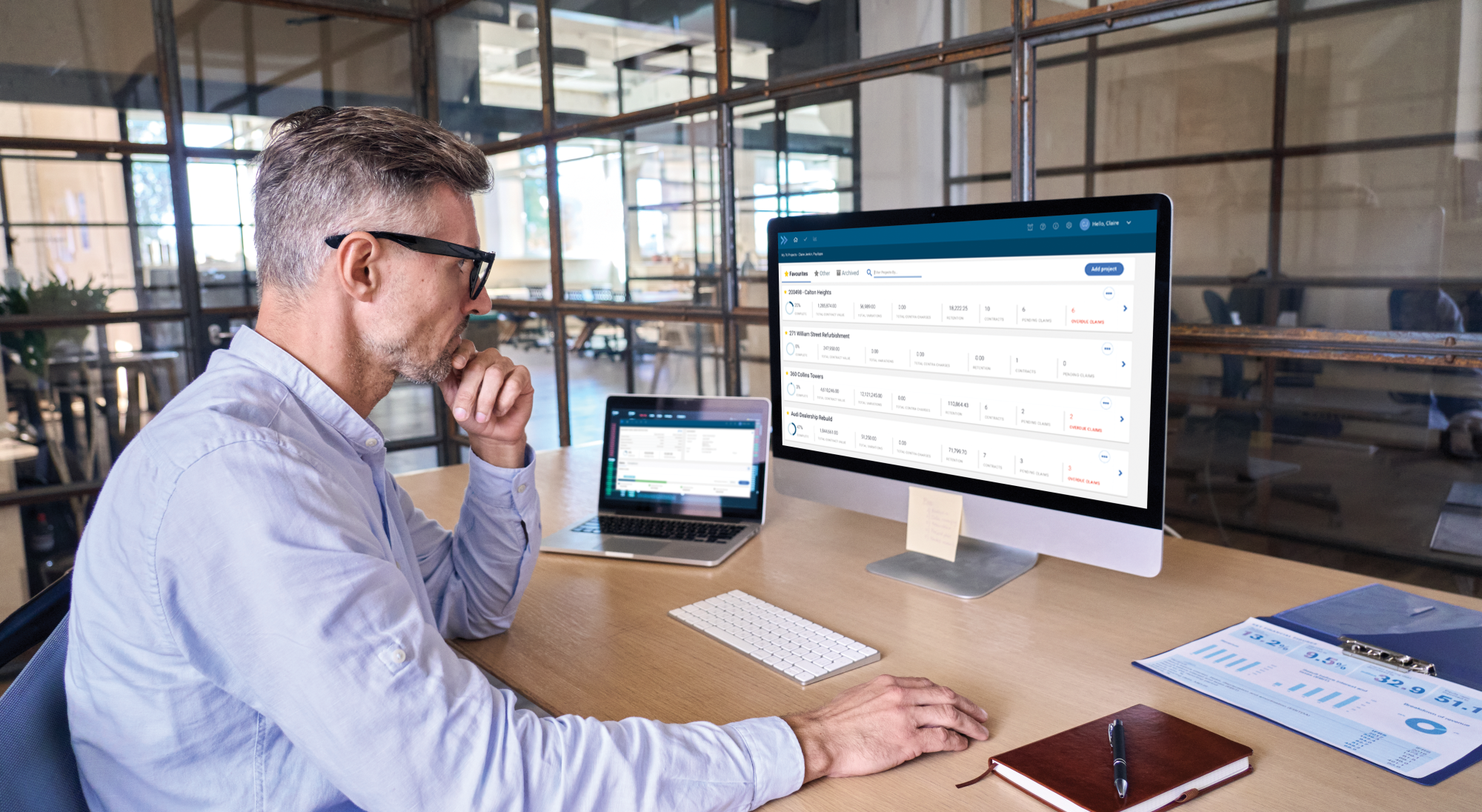As the construction industry transitions from surviving to thriving mode post-pandemic, the time has come for businesses to start growing profit margins to strengthen their position in the industry and stay ahead of the competition.
Developing a strategic plan is vital for construction businesses looking forward to re-establishing company stability and healthy profit margins while eradicating financial distress in the sector caused by the pandemic. This plan should be sustainable enough to strengthen your business even during more predictable times so you can weather future storms and unexpected events. Strengthening your business also has the positive side-effect of benefiting a broad range of people involved in this industry – from your employees to partners up and down the value chain.

Take the opportunity to reset
Following the COVID-19 pandemic, life is returning to something resembling normal. Therefore, this is the ideal time for construction business owners to seize the opportunity to reset for a profitable market future. Here are six ways to expedite the process to reduce costs and improve profit margins in your construction business.
Check out our series of interviews with industry thought leaders sharing insight and advice on how your business can thrive even in challenging times.
Six ways to reduce costs and improve profit margins
1. Materials
It’s widely known that purchasing materials in bulk can save considerable financial expenditure because the total cost of materials reduce the more you buy. To make this strategy effective, it’s important to plan ahead and purchase the right amount in bulk so you balance not running out of materials with not having to house excess stock.
Improve your profit margins by purchasing wholesale building materials direct from wholesale dealers which offer the best pricing on bulk deals.
2. Labour and skills
The construction industry relies significantly on labour and skills, so it’s imperative to have the right set of people in the right roles if you want to achieve higher profit margins consistently. And providing your people with the right tools will grow their skill sets and help them become more efficient, and increase staff retention levels.
You can differentiate your business from competitors by setting high standards in talent management and employing a committed workforce. Collaborating with the right recruitment firms can help you fill positions quickly, reducing costs and saving time.
3. Supply chain
To increase profit margins and reduce costs, you could broaden the scope of your supply chain. To do this, make sure you have robust procurement and logistics in place and closely monitor it, end-to-end.
Lack of collaboration between two or more parties can result in a less productive Supply Chain Management (SCM) model, which can be a hurdle in the efficient implementation of a project. Shifting from a procurement-driven approach to a result-oriented end-to-end supply chain approach by proactively managing a cross-functional team can be the key to uncovering greater cost-saving efficiencies.
4. Project management
Detailed and precise strategic plans are integral for minimising project delays. A precisely planned project improves efficiency and drives down costs, ultimately helping you conclude the project within the agreed budget.
It’s difficult, particularly in fast-moving sectors like mechanical and electrical services, and fit-out, but taking the time to work with your supply chain to estimate project costs and plan properly upfront means fewer and/or less costly variations are likely throughout the project.
Effective communication between stakeholders is also vital, resulting in better project collaboration and helping the project to be completed on time and within budget. Good communication is essential for preventing misunderstandings, issues, and delays across the life of the project.
5. Waste management
According to a report by the Master Builders Victoria and Ecorecycle Victoria, the cost of material waste is equivalent to approximately 10% of the overall project costs. You’ve already paid for the materials, so paying to dispose of them is only costing you more.
Waste management can be achieved more effectively using source reduction to lower the life cycle of waste generation, material use, and energy. The first step is to reduce the waste that’s generated and accumulated during the construction project.
Another way you can reduce costs and improve profit margins in the medium term is by recovering demolition debris and valuable construction materials as the project takes place. This tactic can help save future construction expenses, at the same time conserving natural resources.
6. Construction-specific tech
Like any industry, construction faces fluctuating issues such as supply, demand, rising material and labour costs, inflation and labour shortages. In this climate, a strategic focus on sustainability in terms of business longevity is vital. The best way to prepare for future challenges is to assess and where appropriate adopt the latest trends and advances in technologies before your competitors implement them. To that end, plan ahead by assessing and adopting new construction technologies which can help your business become a more profitable and efficient construction company.
Use of drones and 3D printing for example can help play a significant role in helping achieve cost reduction in the sector while implementing construction processes and workflows in a more accessible and scalable way.
Many construction firms think of adopting new technologies only in the course of their frontline operations, but to prepare for future challenges, automation in back-end processes – including payment management – should be considered.
Automation is the future, and switching to new technologies that automate tedious processes in your construction business can save you time, significantly improve efficiency, and eliminate erroneous manual work from the business. Such technological investments may reduce a myriad of soft costs for your business which further improve profitability.
Often, these tools make back-office processes, such as managing application for payments, faster and more efficient. Payapps is one such tool.
Frequently Asked Questions
1. What is a good profit margin for construction?
A good profit margin for a construction business would be anywhere between 15% to 25%.
2. How to reduce construction costs
Construction costs can be reduced by increasing workers’ productivity and efficiency and implementing the proper project management and waste management strategies.
3. How to increase profit margin in construction
Profit margin in construction can be increased by reducing the cost of customer acquisition, setting realistic goals, tracking them, and using construction equipment wisely.
4. How to save money in construction
To save on construction costs, you need to adapt to construction-specific technologies, improve the supply chain, and purchase materials in bulk, all of which can help businesses achieve good deals and discounts.
5. What are the best construction cost reduction strategies?
The best construction cost-cutting strategies would be recovering the construction materials, implementing robust project management and planning waste management efficiently.
Manage costs and processes for applications for payment with Payapps
If you’re like many construction businesses, you kept your head above water during the pandemic, but growing your business remains challenging and future unexpected events must be taken into account in order to remain competitive. To enjoy healthy profit margins, look at ways to reduce costs and deploy technology to better understand your costs and find new growth opportunities. Lay a strong foundation for your back-end and frontline systems with a mix of the right team members and supply chain partners to help future-proof your organisation.
Interested in more information on this topic?
Read our recent eGuide, Thriving in Construction Post-Pandemic: 4 Areas of Strategic Focus, which looks at moving from surviving to thriving and optimising your post-pandemic return.






